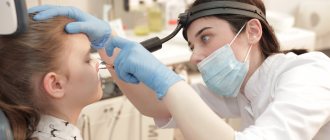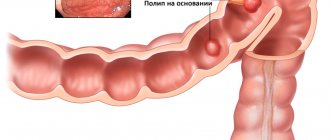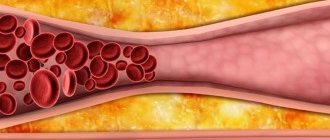- If you are allergic to house dust, the patient is advised to get rid of carpets, down pillows and blankets. It would also be a good idea to install an air purifier in your home.
- If you have chronic diseases of the nasopharynx or paranasal sinuses, it is recommended to take measures to prevent their exacerbations.
- In some patients, correction of defects in the nasal cavity (for example, a deviated nasal septum) has a good effect.
For small polyps, nasal sprays with glucocorticosteroids help stop their further growth.
By suppressing the inflammatory response, such drugs prevent the proliferation of mucous membranes. However, most often patients consult a doctor when the disease is already advanced and the growths almost completely block the respiratory passage. The only salvation in such cases is surgical removal of nasal polyps.
Nasal polyps: what are they?
This is a benign growth of the mucous membrane of the sinuses and nasal cavity. They can make it difficult to breathe through your nose and cause symptoms such as snoring and a decreased sense of smell (to the point of no sense of smell). Polyps are usually diagnosed against the background of chronic sinusitis.
These formations (benign) range in size from 2-3 mm to 4-5 cm and can grow into the nasal cavity. Located on the mucous membrane and connected to it by a base: thin or wide.
Polyps occur mainly in adulthood. In childhood, nasal polyps occur in bronchial asthma, cystic fibrosis and in rarer systemic diseases leading to dysfunction of the mucous membrane (ciliary dyskinesia).
What are the typical symptoms?
Nasal polyps do not always cause discomfort at first. As they increase in size, they can cause various symptoms, for example: nasal congestion, nasal sound, frequent acute respiratory viral infections and inflammation of the sinuses with headaches, and impaired sense of smell.
More information about possible signs can be found in the “Symptoms” chapter.
Why does a nasal polyp develop?
The exact reasons are unclear. A risk factor is chronic inflammation of the mucous tissue, due to infection or allergy. Polyps are especially common in patients with bronchial asthma (intolerance to NSAID analgesics). More detailed information can be found in the chapter "Causes".
How are nasal polyps treated?
Local medications are usually prescribed, such as corticosteroid (hormonal) nasal sprays, and antihistamines may be used if allergies occur. Hormonal therapy is often prescribed not only locally, but also systemically - in the form of tablets.
If this treatment is unsuccessful, surgical intervention is necessary, with the help of which an ENT doctor removes the polyps. More detailed information can be found in the “Treatment” chapter.
A common mistake is “polyps” in children
“Does the child have polyps? must be removed”, this is often found in colloquial speech. However, when talking about children, nasal polyps are rarely considered. Usually we mean adenoids, enlarged nasopharyngeal tonsil (adenoid vegetations), that is, lymphatic tissue. This has nothing to do with “true” nasal polyps, which develop from the lining of the nose. The latter are more common in adults. Only children with systemic and metabolic diseases (cystic fibrosis) very often suffer from nasal polyps.
Important Note:
This article contains general information only and should not be used for self-diagnosis or treatment. It cannot replace a visit to the doctor.
Nasal polyps: causes
What causes nasal polyps is not known. But the main risk factors are allergies and chronic rhinosinusitis.
The nasal cavity and paranasal sinuses have a complex self-cleaning mechanism. The cells of the mucous membrane form a thin film of secretion, into which pathogens (viruses, allergens, dust particles) enter from the inhaled air. As a result, the air entering the lungs is purified and moisturized. The cells contain movable hairs (cilia), which transport secretions from the sinuses continuously to the posterior sections of the nasal cavity, from there to the nasopharynx, pharynx, and eventually this mucus enters the acidic environment of the stomach.
Impaired outflow of mucus from the sinuses.
The paranasal sinuses are connected to the nasal cavity through narrow “channels” of the anastomosis. Deviation of the nasal septum and other anatomical features can lead to a narrowing of these “channels”. As a result, discharge accumulates in the sinus cavity and provides ideal soil for the proliferation of pathogenic microorganisms.
Due to frequent infections, the mucous membrane is constantly irritated and swollen - which further aggravates the situation. Polyps may form, which, in turn, further block the outflow from the sinus.
Allergies are a possible precursor to nasal polyps.
Allergies contribute to prolonged irritation and swelling of the mucous membrane in the nasal cavity and sinuses, which can lead to the formation of polyps. Many patients with nasal polyposis simultaneously suffer from various forms of allergies. Even patients without allergies who constantly inhale too dry or polluted air have an increased risk of developing polyps.
Frequent combination: intolerance to analgesics, asthma, polyps (aspirin triad).
People with bronchial asthma are prone to developing nasal polyps, as well as people who cannot tolerate analgesics, specifically non-steroidal anti-inflammatory drugs (NSAIDs). Patients with such NSAID intolerance suffer from asthma attacks as soon as they take certain medications - for example, acetylsalicylic acid (aspirin), ibuprofen, diclofenac, analgin. This is a so-called “pseudo-allergy”; the body does not form specific antibodies against drugs, as with a real allergy.
The combination of NSAID intolerance, nasal polyps and asthma is also called: Samter's triad, Fernand-Vidal triad.
Cystic fibrosis.
Nasal polyps are rare in children—with one exception: About one-third of all children with the congenital metabolic condition cystic fibrosis also develop nasal polyps. With this pathology, the glands secrete an abnormally viscous secretion, which accumulates in the sinuses, which contributes to chronic sinusitis and, consequently, nasal polyps.
A rare cause is primary ciliary dyskinesia.
This is a congenital pathology, which is manifested by underdevelopment of the “cilia” and can manifest itself as frequent respiratory diseases and persistent nasal congestion.
You should be aware that long-term use of vasoconstrictor nasal sprays can affect cilia function in a similar way.
Possible complications
Constant disruption of nasal breathing causes the development of hypoxia, which has a bad effect on the body as a whole. This condition is especially dangerous for the development of children. Nasal congestion leads to psychological problems. Symptoms of sinus polyposis often cause poor mood and increased irritability in adults and children. Advanced stages of the pathology cause resorption of the bone structures and cartilage of the nasal septum and the walls of the paranasal sinuses. If polyps grow into the nasolacrimal duct, constant lacrimation appears.
Nasal polyps: symptoms
Nasal congestion, difficulty breathing through the nose, decreased sense of smell, snoring, headaches - all these symptoms can provoke nasal polyps.
Polyps sometimes persist for a long time without causing discomfort. However, depending on their location, size and number, they can disrupt the aerodynamics of the nasal cavity and the ventilation of the sinuses. The secretion of mucus in the sinuses and nasal cavity is disrupted, and drainage from the sinuses through the anastomosis becomes difficult. Patients breathe through the mouth rather than through the nose, which typically warms, purifies, and humidifies the breathing air.
All this provokes infection of the nasopharyngeal area. Frequent or persistent chronic sinusitis, recurrent respiratory tract infections (ARI, bronchitis) are the result.
These symptoms may indicate polyps:
- Difficulty breathing and nasal congestion.
- Bad breath due to drying of the oral mucosa - nasal breathing is impaired and patients have to breathe through the mouth.
- Night snoring.
- Nasal voice.
- Olfactory disorders: The sense of smell is impaired or completely lost (because air does not reach the olfactory cells in the upper part of the nasal cavity).
- Pain in the sinuses, constant presence of mucus in the nasopharynx - these symptoms indicate chronic inflammation of the paranasal sinuses - the cause and effect of polyps.
- Nasal polyps occur in children mainly only in diseases such as bronchial asthma, cystic fibrosis or ciliary dyskinesia (see Chapter Causes). If polyps are left untreated in children, they can cause the nose to widen and the distance between the eyes to increase.
Sign up for a consultation
Preventive actions
To prevent the occurrence of nasal polyposis and paranasal sinuses, it is recommended to prevent this condition: Treat infectious diseases in a timely manner. If nasal breathing problems occur, immediately contact an otolaryngologist. If bronchial asthma develops, be constantly monitored by an otolaryngologist and an allergist. Prevent relapses of surgical treatment. For this purpose, irrigation therapy and conservative treatment are used. Nasal polyposis is a fairly common disease that leads to chronic impairment of nasal breathing, which significantly reduces the quality of life of adults and children. To get rid of this problem, you need to promptly consult a doctor who will make a diagnosis and select effective treatment. Typically, surgery helps eliminate the symptoms of polyposis, and postoperative monitoring and therapy help prevent relapses of the disease.
Nasal polyps: diagnosis
When examined by an ENT doctor, nasal polyps can be identified visually.
Additional methods, such as computed tomography, provide additional information about the extent of the pathological process. Examination by an ENT doctor.
First, the specialist asks about the patient’s complaints and previous diseases (allergies, sinusitis, etc.). Symptoms such as problems with nasal breathing, impaired sense of smell or frequent sinusitis already raise suspicions about polyposis rhinosinusitis.
Then the doctor carefully examines the ENT organs. Large nasal polyps that protrude into the nasal cavity may already be visible to the naked eye. With the help of speculums and a nasal endoscope, the doctor often finds smaller polyps located more deeply.
Radiation diagnostics.
To obtain accuracy in diagnosis, it is necessary to understand the extent of the spread of polyps in the paranasal region; imaging methods, in particular computed tomography (CT), are suitable for this purpose. Conventional x-rays of the sinuses are considered obsolete. Ultrasound and MRI can be used in the diagnosis of nasal polyps only in rare cases.
Nasal polyps: treatment
To treat nasal polyps, the first stage is drug therapy, for example, in the form of nasal sprays. If the prescribed treatment does not improve the patient's condition, surgical methods are considered in which polyps are removed.
Drugs for the treatment of nasal polyps.
To treat nasal polyps, hormonal drugs based on glucocorticosteroids are used.
Hormonal medications are usually prescribed first in the form of a nasal spray. Advantage: It only works locally, possible side effects are limited to the site of use.
Unlike vasoconstrictor decongestant nasal sprays (xylometazoline, oxymetazoline), the effect of a hormonal spray appears only after a few days.
Correct use of the drug is important; the spray should not be sprayed into the nasal cavity towards the nasal septum!
If treatment with hormonal sprays is ineffective, tablets may be prescribed; this therapy sometimes causes side effects. Therefore, you should carefully monitor your condition.
If an allergy is a provoking factor for nasal polyps, then you first need to pay attention to its treatment. Medicines for allergic reactions, so-called antihistamines, are recommended. The patient should avoid contact with the allergen if possible. Specific immunotherapy (hyposensitization) is also acceptable in this situation.
Surgery for nasal polyps.
If drug treatment fails or the polyps are already very large, surgical treatment options should be considered.
Removal of single polyps (polypectomy) can be performed on an outpatient basis under local anesthesia. However, nasal polyps are usually just the tip of the iceberg because the polyps originate from the paranasal sinuses.
Advanced interventions are usually performed under general anesthesia in an inpatient setting.
During the operation, the doctor removes the polyps “minimally invasively,” that is, without large incisions. Surgery can almost always be done directly through the nose - endoscopic intranasal surgery (FESS) using a shaver is the most optimal treatment for nasal polyps.
Correction of intranasal structures is often performed simultaneously. Sometimes it is advisable to straighten the nasal septum (septoplasty) or reduce enlarged nasal turbinates (vasotomy), or expand the anastomosis of the paranasal sinuses (sinusotomy) to normalize ventilation.
All measures should be aimed at normalizing aerodynamics and ensuring normal passage of discharge from the sinuses through the anastomosis into the nasal cavity. On the one hand, this should eliminate symptoms such as difficulty breathing through the nose and sinus pain, and on the other, prevent the appearance of new polyps.
ethnoscience
The most famous methods:
- treatment with celandine juice,
- rinsing the nasal passages with herbal decoctions,
- putting essential oils into the nose.
celandine juice yourself. The plant, dug up along with its roots in May, is washed, put through a meat grinder and infused for a week. After this time, it begins to ferment (a sure sign that the drug is ready). The juice is diluted with water in a 1:1 ratio.
Instill 2 drops into the nostril every morning (regardless of the location of the polyp, both nostrils are subjected to the procedure). The full cycle consists of 5 courses, each of which lasts one week. There is a 10 day break between courses.
Treatment with essential oils lasts even longer: for 6 months, 2 drops of oil from one of the plants are instilled into the nostrils twice a day:
- St. John's wort,
- wild rosemary,
- thuja occidentalis.







